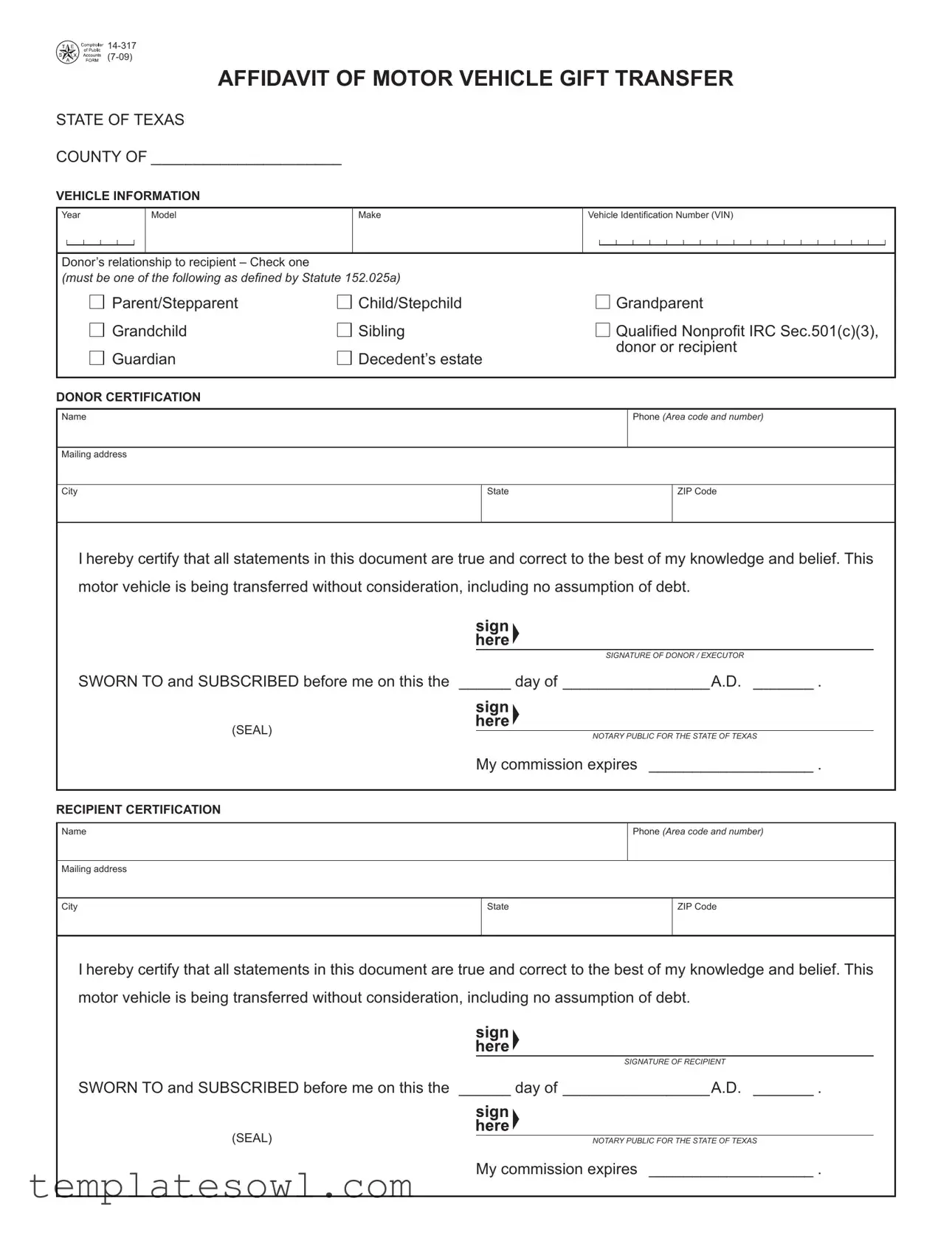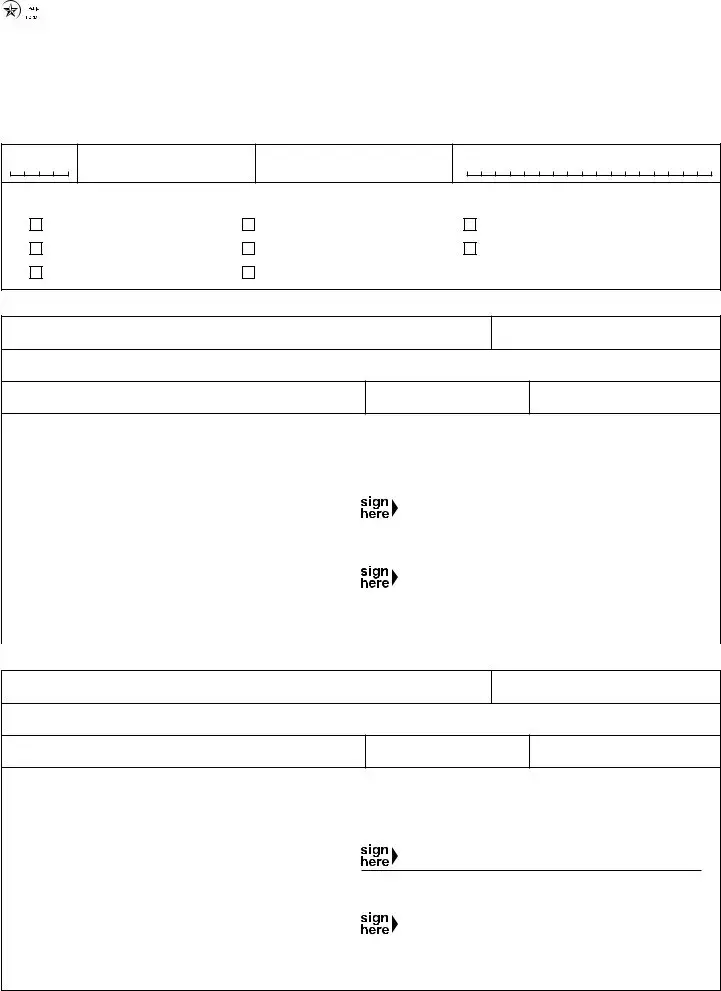What is the purpose of the 14-317 form?
The 14-317 form, also known as the Affidavit of Motor Vehicle Gift Transfer, is utilized to document the transfer of a motor vehicle as a gift. In Texas, this form is useful for establishing that the vehicle is being transferred without any consideration, meaning there is no payment involved in the transfer. It is important for both the donor and recipient to affirm that no debts are assumed in the process, ensuring a clear understanding of the transaction.
Who can complete the 14-317 form?
This form must be completed by both the donor (the person gifting the vehicle) and the recipient (the person receiving the vehicle). Additionally, the relationship between the donor and the recipient must fall within specific categories defined by Texas statute, including parent, child, grandparent, grandchild, sibling, qualified nonprofit under IRC Sec. 501(c)(3), guardian, or a decedent's estate donor or recipient.
What information is required on the form?
The 14-317 form requires several key pieces of information. The vehicle’s year, model, make, and VIN (Vehicle Identification Number) must be documented. Furthermore, the names, phone numbers, and mailing addresses of both the donor and recipient are needed. Each party must also certify the truthfulness of the information provided, and both must sign in the presence of a notary public to finalize the affidavit.
Is it necessary to have the form notarized?
Yes, notarization is a critical step in completing the 14-317 form. Both the donor and the recipient must sign the form in front of a notary public. This requirement adds an additional layer of verification to the document, ensuring that the signatures are valid and that the declarations made by both parties are officially recognized.
















